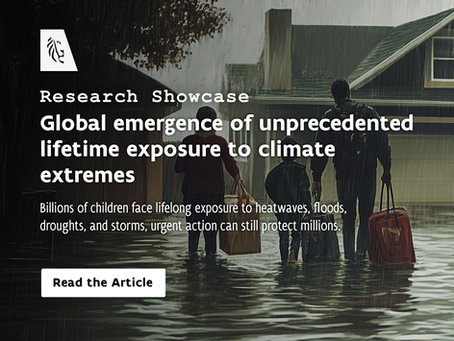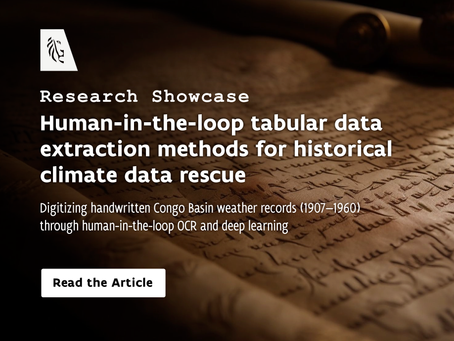top of page

Latest News
Welcome to the latest news and events page for the Flemish Supercomputer Center. This page serves as the go-to source for all announcements, updates, and news related to the center. Whether you are a researcher, a student, or simply interested in the latest developments in high-performance computing, you will find valuable information here.


Schistosome species, parasite development, and co-infection combinations determine microbiome dynamics in the snail Biomphalaria glabrata
Schistosomiasis is a snail-borne parasitic disease affecting over 200 million people worldwide. This study examines how schistosome species, parasite development, and co-infection influence the microbiome of the freshwater snail Biomphalaria glabrata. Using 16S rRNA gene metabarcoding, it reveals species-specific microbiome disruption, developmental timing effects, and a stabilizing role of certain co-infections in host–parasite–microbiome interactions.
Dec 154 min read


Metro 3 in Brussels under uncertainty: scenario-based accessibility analysis
Metro 3, a proposed north–south automated metro line in Brussels, has faced major delays and cost increases, rising from €0.85 billion in 2009 to €5–7 billion today. This study provides the first reproducible, scenario-based accessibility analysis of the project. Results show modest average travel-time gains but significant benefits for lower-income districts, with the full line improving both speed and reliability across the city.
Dec 23 min read


X-chromosome upregulation operates on a gene-by-gene basis at RNA and protein levels
Mammalian cells can increase the activity of the remaining copy of a gene when the other is deleted. This study shows that the active X chromosome performs this compensation on a gene-by-gene basis at both RNA and protein levels. The work clarifies how cells maintain balanced gene expression and reveals a broader, though limited, compensatory capacity across the genome.
Nov 172 min read


Flare Energetics, CME Launch and Heliospheric Propagation for the May 2024 Events, as Derived from Ensemble MHD Modelling
A team led by Professor Stefaan Poedts used VSC’s supercomputing power to model the May 2024 solar eruptions from the Sun to Earth. Through advanced MHD simulations, they revealed how magnetic energy buildup triggers solar flares and coronal mass ejections, improving space weather forecasts and contributing to more accurate predictions of geomagnetic storms.
Nov 53 min read


How Plasma Reaction Conditions Affect the Optimal Catalyst: A Microkinetic Study of Plasma-catalytic CO2 Splitting
Plasma catalysis offers a sustainable route to convert CO₂ into valuable chemicals using renewable electricity. Researchers used VSC’s computational resources to model plasma–catalyst interactions and reaction kinetics on glass and transition metal surfaces. Their findings reveal how catalyst choice and reaction conditions influence CO₂ splitting efficiency and product formation, advancing understanding of plasma-driven CO₂ conversion.
Oct 202 min read


Personalized federated learning for predicting disability progression in multiple sclerosis using real-world routine clinical data
Researchers from KU Leuven and UHasselt demonstrated that personalized federated learning (PFL) can significantly improve predictions of disability progression in Multiple Sclerosis (MS). Using data from over 26,000 patients, the team developed novel approaches like AdaptiveDualBranchNet, balancing global collaboration with local adaptation. The work was made possible by the VSC’s high-performance infrastructure, enabling large-scale federated experiments.
Oct 64 min read


A systematic evaluation of Dutch large language models’ surprisal estimates in sentence, paragraph and book reading
Reading is shaped not only by word length and frequency but also by how predictable a word is in context. Using Dutch language models, researchers show that smaller models often predict reading times better and that predictability follows a logarithmic effect. With VSC’s computing power, large-scale analyses became possible, revealing new insights into how humans and machines process language.
Sep 223 min read


A new approach for a quantitative description of strongly correlated materials
Researchers from Ghent University have developed a new computational method that accurately predicts the exotic properties of strongly correlated materials, such as high-temperature superconductors. By combining downfolding techniques with tensor networks, and using the power of VSC supercomputing, the team achieved highly precise simulations of electronic structures—opening new paths for quantum devices and next-generation electronics.
Sep 113 min read


Measuring approximate functional dependencies: a comparative study
Functional dependencies describe strong relationships in relational databases, helping ensure data consistency and integrity. When data is incomplete or contains errors, approximate functional dependencies (AFDs) become essential to detect patterns that “almost hold.” This study evaluates multiple AFD measures, identifying effective methods for discovering hidden dependencies in real-world large-scale datasets.
Aug 254 min read


PIDGIN Project: Harnessing AI and HPC to Advance Lung Cancer Diagnosis
The PIDGIN Project at Hasselt University combines pathology, biomedical sciences, oncology, and data science to improve lung cancer diagnosis through AI and high-performance computing. By digitizing tissue slides and analyzing them at the pixel level, researchers can detect patterns invisible to the human eye. With VSC’s Tier-1 infrastructure, the team achieves faster, more accurate, and reproducible diagnoses, paving the way for personalized treatments.
Aug 113 min read


Homophily promotes stable connections in co-offending networks but limits information diffusion
Why do some offenders repeatedly team up with the same partners—and what does this mean for what they learn? This study uses agent-based modeling to explore how homophily, or the preference for similar partners, shapes co-offending networks. The findings show that while homophily fosters trust and stable ties, it also slows the flow of criminal skills across the network, revealing a trade-off between stability and broader learning.
Aug 82 min read


How do side branches in acute Type-B aortic dissections affect stabilization of the arterial wall? - Insights from an idealized fluid-solid interaction study
This study explores how side branches in acute Type-B aortic dissections affect pressure and wall stabilization using fluid-solid interaction (FSI) simulations. By modeling blood flow and tissue dynamics in an idealized aorta, the research reveals that side branches—especially from the false lumen—can increase systolic pressure and influence membrane displacement. High-performance computing at VSC enabled this complex analysis.
Jul 284 min read


Enhancing Structural Design: A Practical Review on Promoting Connectivity in Topology Optimization
Topology optimization unlocks lightweight, high-performance designs, but poor connectivity often limits manufacturability and reliability. This review explores methods to promote structural continuity, comparing physics- and geometry-based approaches, and offering practical guidelines to bridge the gap between theory and real-world engineering.
Jul 173 min read


Global emergence of unprecedented lifetime exposure to climate extremes
Millions of today’s children face unprecedented lifetime exposure to heatwaves, floods, droughts, and storms if global warming reaches 3.5 °C. Deep emission cuts to meet the Paris 1.5 °C goal could protect millions. Urgent climate action is needed to safeguard children’s futures worldwide.
Jul 73 min read


Human-in-the-loop tabular data extraction methods for historical climate data rescue
Researchers from Ghent University and VUB are digitizing Congo Basin weather records (1907–1960) using human-in-the-loop AI. By combining OCR models, vision-language tools, and expert corrections—with the help of VSC supercomputing—they’ve achieved high accuracy in transcribing complex handwritten climate tables. The study highlights the power of AI-human collaboration in preserving historical data.
Jul 23 min read


Rotational excitation of interstellar complex organic molecules: the example of vinyl cyanide
We investigate the rotational excitation of vinyl cyanide, a complex organic molecule detected in interstellar space. Using high-level quantum chemistry and HPC, we compute collisional cross-sections and rate coefficients critical for modeling astrophysical environments like Sagittarius B2. This work advances our understanding of chemical complexity in the cosmos.
Jun 233 min read


Genomic diversity in felids correlates with range and density, not census size
Genetic diversity is vital for species survival, yet not all wild cats possess it equally. By analyzing genome data from 39 felid species, researchers revealed that cats with large ranges and high population density—like ocelots—harbour more genetic diversity than rare, low-density species like the Asiatic lion. This large-scale study was powered by the Flemish Supercomputer Centre (VSC).
Jun 163 min read


The probabilistic and dynamic nature of perception in human generalization behavior
This study presents a computational model combining perceptual and generalization theories to explore how humans transfer learned fear to new situations. Using Pavlovian fear conditioning data, it reveals dynamic individual differences in perception that shape behavior. By modeling perception as probabilistic and ever-changing, the research highlights the need to rethink how mental representations influence generalization.
Jun 132 min read


HPC Simulations Uncover How Hydrogen Moves Through Metals
Hydrogen can weaken metals by causing internal cracks, a problem known as hydrogen embrittlement. Using advanced simulations and digital twins, researchers modeled how hydrogen moves through metallic microstructures. Their findings reveal a new inward diffusion mechanism, challenging classical theories and offering fresh insights for safer hydrogen-based technologies.
Jun 33 min read


Discoveries from Sint-Truiden: Ancient DNA Unveils a Thousand Years of History
From excavation to data lab: This gallery captures the Sint-Truiden paleogenomics project — where over 3,000 medieval burials were unearthed and analysed. Behind each image lies a story of meticulous archaeology, DNA research, and high-performance computing powered by VSC.
May 284 min read
bottom of page
